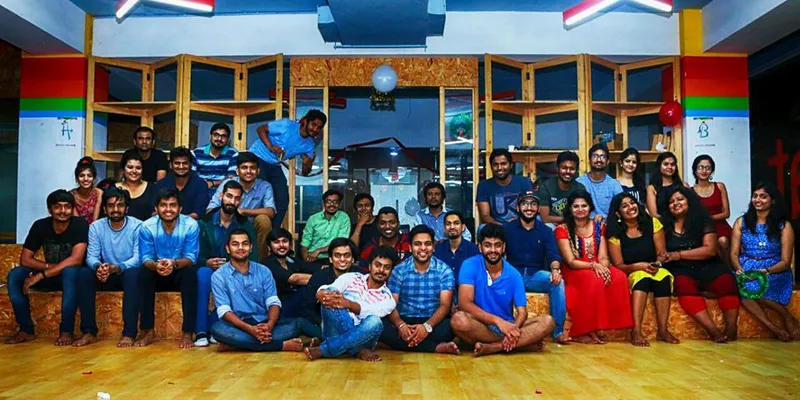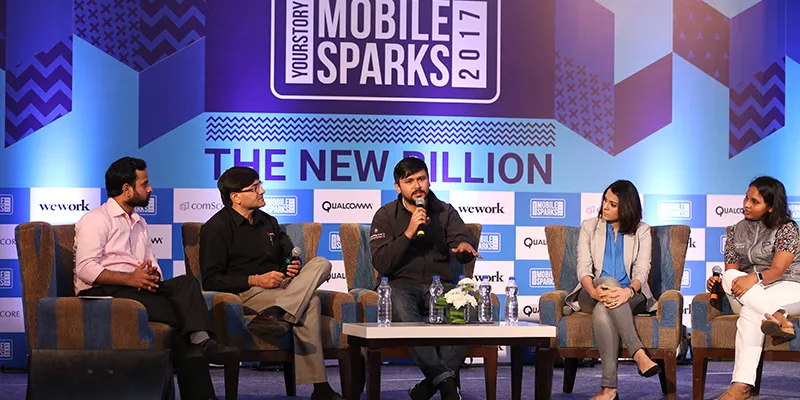Investor's take: the making of the ShareChat story and the way forward
Mayank Khanduja, Principal at SAIF Partners that has invested in ShareChat, shares his views about the challenges facing the startup which is building the social platform for the next billion in India.
Imagine this. A young 20-year-old in small town Uttar Pradesh saves money and finally gets her hands on a cool new smartphone, gets it recharged with her first data pack, logs in to WhatsApp and hopes to find loads of interesting content to come to her.

But the trouble is that she needs to wait for the content to reach her as she cannot search for it. ShareChat, the local language social networking app, started out with a mission to solve this. Help all these new Indian internet users find content and people that interest them.
Over the last two-and-a-half years, the product has evolved from a place where users go for entertainment to a much larger social networking platform where users also find useful content like news and knowledge along with other users, i.e., content creators.
The users’ love for ShareChat is evident from the fact that it had moved from a Daily Active User (DAU) base of 3000 (when we first invested in them) to approximately 2.25 million today and an average Play Store rating of 4.5. The number of sessions per week on ShareChat has grown by 7x in the last 12 months alone! And its users not only consume content, but they also love to create it.
From less than one percent content created by users about 24 months back, 100 percent of content on ShareChat is now created by its users.
I knew Farid, Bhanu, and Ankush (young and formidable founders of ShareChat) for a good six months before SAIF Partners invested USD 1 million in their Seed Round. In fact, when I first met them, Ankush was still in IIT Kanpur completing his B Tech. They are all mates from IIT Kanpur who have worked together on umpteen numbers of ideas and ventures together. We loved the energy, passion, and chemistry the team brought with them.
The company later raised a Series A Round of $ 4 million led by Lightspeed Ventures. They recently announced their Series B Round of $ 18 million led by Xiaomi and Shunwei Investments.
Made in India, for the new India
I first came across the trio when they were not working on ShareChat, but on an online debating app called Opinio that showed up in our in-house tool for tracking fast-growing apps on Google Play. When I first met them, what struck me was their understanding of the Indian user, a user they knew very closely having lived and studied in the non-metro India.
India has been going through a tsunami of sorts in the internet world. Three years back, the familiar lament for all the internet businesses was that there were three bugbears that were holding them back – the cost of data, access to fast connections, and poor online payment mechanisms.
But there has been a dramatic improvement in all three during the last 18 months. The entry of Jio and the subsequent drop in data rates, the rapid increase in high-speed connections and the massive surge in digital payments led by UPI and Paytm have opened the floodgates to India’s next 200-300 million internet users.
Today, India has about 500 million internet users, 75-80 percent of them being mobile. Of these, 200-300 million are likely to be regional language users. They are relatively new to internet and have five key characteristics that set them apart from others-
- They have a single shared TV at home where content consumption is based on the majority's choice. They feel liberated with a mobile phone with an SD card
- Use their mobile phone as primary entertainment device during their free time
- Access the internet for the first time on the phone. They are not conversant with search and not comfortable with English as a medium of accessing content
- When they are online for the first time, they have an anticipation that the internet is going to solve their content needs
- They love WhatsApp but wait for the content to come to them from friends. Thus, by extension, the friend who sends the best forwards is looked at with reverence
The ShareChat Life
So, what all can a user do on ShareChat. Simply, everything. The fundamental premise is that users interact with a piece of content. That content could be a news, daily horoscope, shayari, latest government job notification, satire on Indian politics, mehndi designs or a microgame.

And this content could come from a regular user, an astrologer sitting somewhere deep in Madhya Pradesh, a local language news outlet in Rajasthan that runs its own official account on ShareChat or a developer building lightweight games sitting in Bangalore.
The role of the platform is to make these interactions as smooth and as personalised as possible to create a truly democratic social platform. Once the platform does it well, the users are ingenious enough to find ways to juice it out for themselves.
For example, when ShareChat didn’t have one-to-one chat, the users would start talking with each other in the comments section of a post. And if they find someone interesting, they would invite them to start commenting on their own post and the conversations would flow thereafter.
Interestingly, we even know some users who have found their life partners on ShareChat!
But so much user love comes with its own risk. ShareChat cannot afford to go down or have high latency. The technology team that works in the background has done a fantastic job to ensure that every time a user logs in, the platform is working to serve him. While this may sound trivial, believe me, it is not. And the challenge increases manifold every New Year's, Valentine’s, Holi, and Diwali etc.
The path ahead
While ShareChat has had a good start, challenges remain. For starters, India has 22 official languages, 122 major languages and more than 1600 known dialects. ShareChat wants to cater to as many users as possible in India. And their ambitions do not stop at India.
The platform is built in a manner to be easily extendable outside India. So, if you ask the team could we see ShareChat in Bahasa? They will say, 'Sure, why not?' While the holy grail for all social networks is to move from content to monetisation, it may be too early to chase monetisation and in the process possibly hurt user experience.
The company has always set audacious goals and has beaten them by a wide margin and we are all rooting for the company to achieve them in the future as well.
(Disclaimer: The views and opinions expressed in this article are those of the author and do not necessarily reflect the views of YourStory.)







